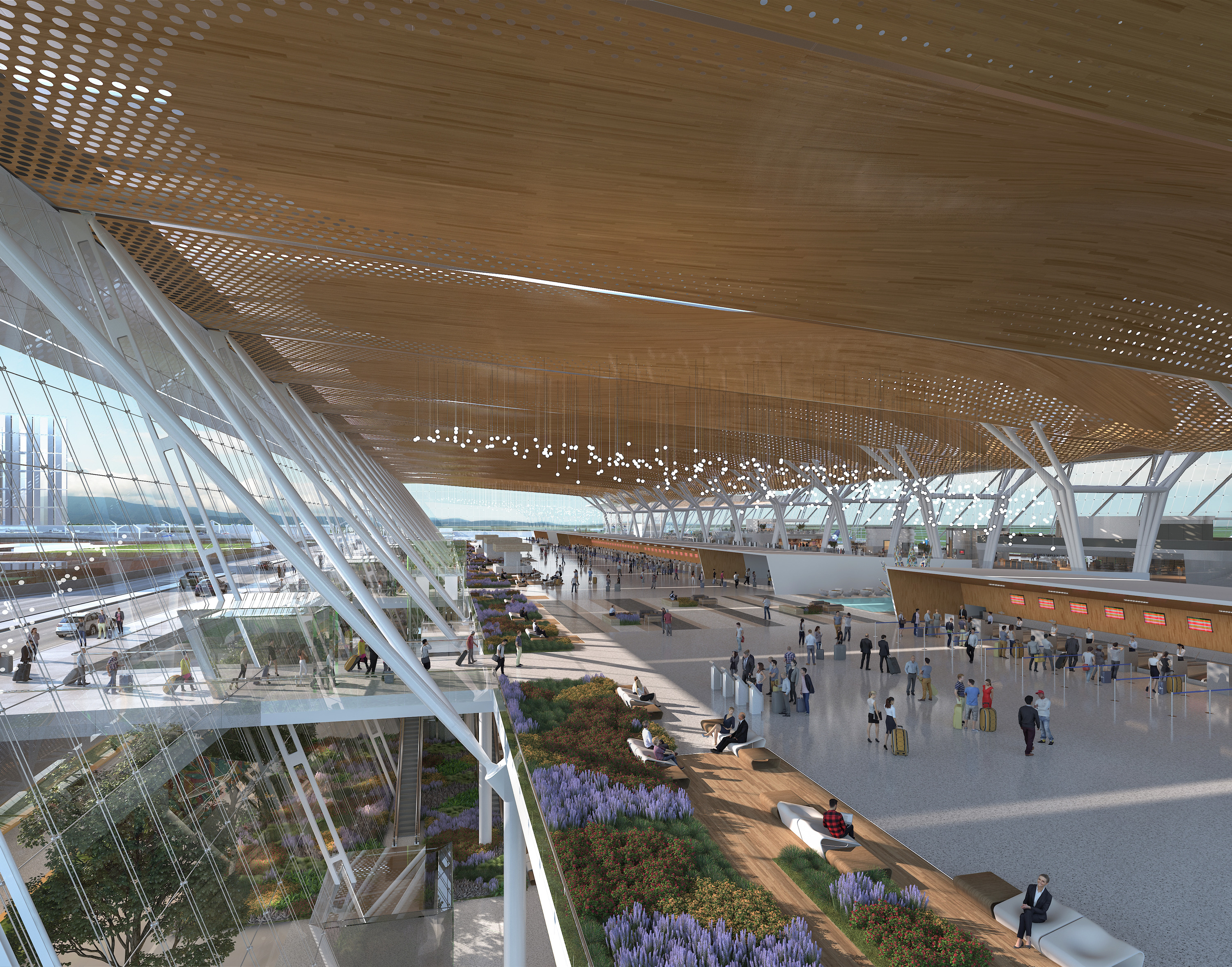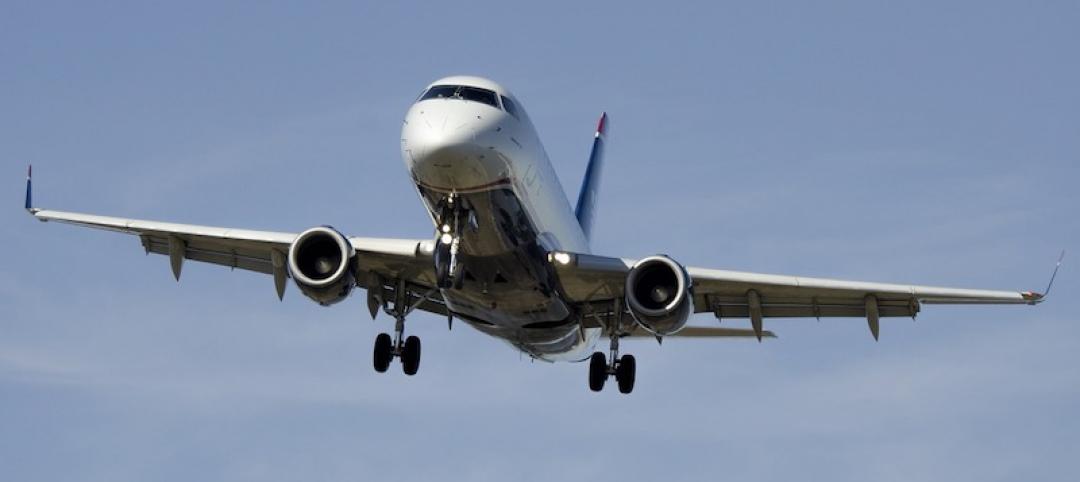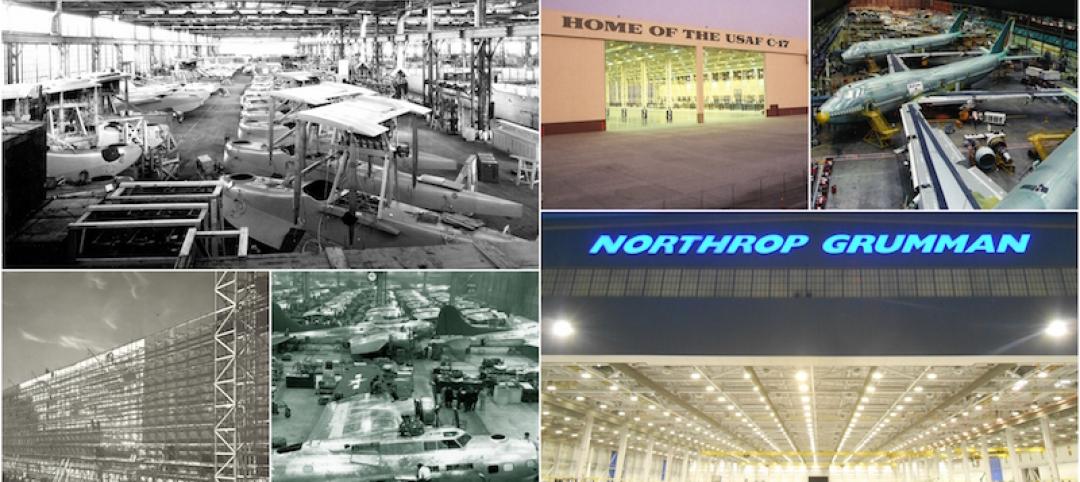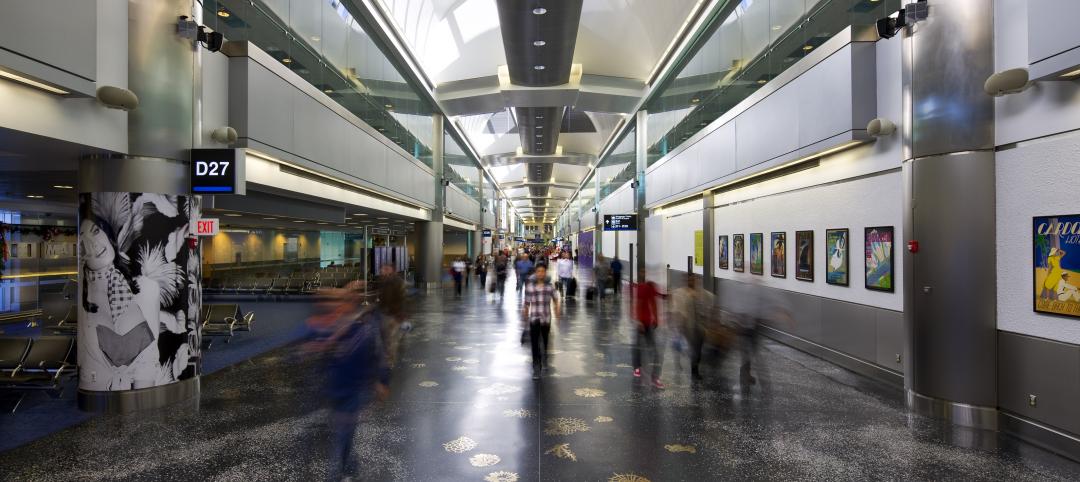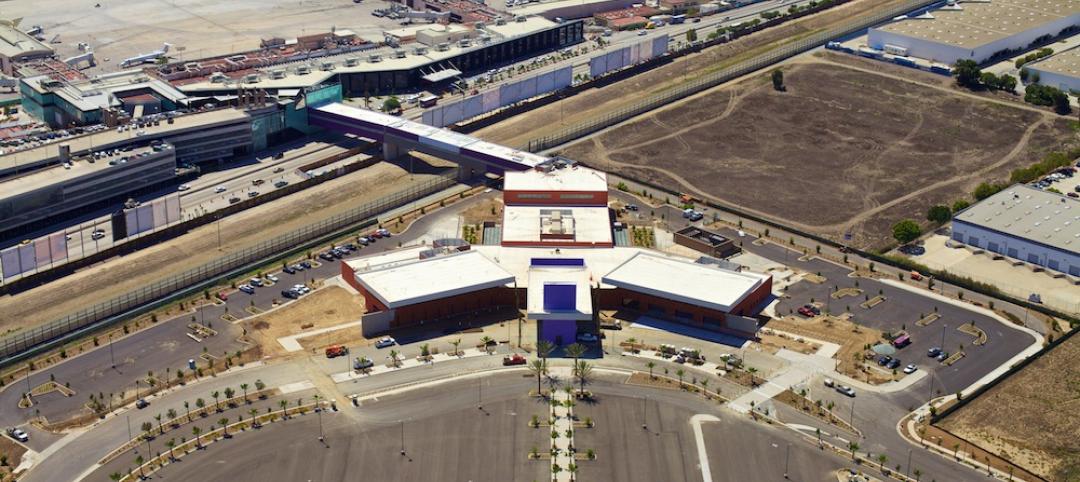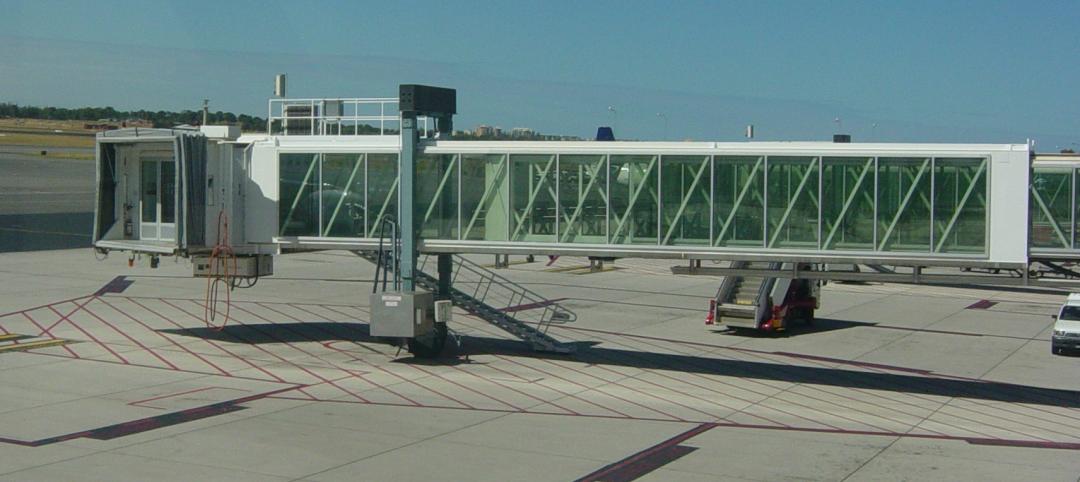During the first 10 days of August, the number of passengers who boarded airplanes in the U.S. averaged fewer than 35% of the number who flew during the those same days a year earlier, according to Transportation Security Administration daily checkpoint counts.
The aviation industry that’s been grounded by the coronavirus pandemic isn’t expected to rebound fully for three to four years. Past shocks, like 9/11, may have prepared the aviation sector to endure trying times. But the virus’s psychological toll has been unique for this country, say AEC sources.
“The consensus among most experts is that it will take quite a long time for passenger confidence to return,” says Jenny Buckley, Americas Aviation Leader for Arup. For at least the remainder of this year, “everyone will be in survival mode.”
James Hall, Vice President-Aviation for Austin Commercial, adds that while leisure travel is inching its way back, uncertainty created by international travel bans and state quarantine requirements “will continue to dog the industry into 2021 and beyond.” Consequently, “the goal of minimizing operational costs and overall employment is at the forefront of every conversation.”
The impact of the coronavirus on airport construction and renovation has been mixed. Paul Dorsey, Vice President-Aviation for Manhattan Construction, cautions that the industry must come to grips with the distinct likelihood that some businesses will permanently limit corporate travel in favor of virtual meetings.
However, Dorsey, like other AEC sources, reports that while projects have been delayed or stopped altogether, others that were funded and already started have been moving forward. Michael Burnett, DBIA, Senior Vice President with Holder Construction, notes that with so much aging infrastructure in need of improvement, “we continue to see aviation opportunities over the next 12-15 months, but more renovations and less expansions.”
Bryant Farland, Regional Executive Officer for Skanska USA Building, cites a recent industry report from the Airport Consultants Council that estimates $138 billion in capital investments will be required through 2024, half of which for terminal projects.
One project that was deemed “essential” is the modernization of LaGuardia Airport in New York, where a joint venture between Skanska and Walsh Construction recently celebrated the opening of seven new gates within 250,000 sf of the airport’s Terminal B Western Concourse. When Terminal B is completed, the joint venture will have delivered 35 new gates.

BNA Vision is Nashville International Airport’s expansion program for which Corgan is serving as the Master Architect. Its biophilic design allows for the introduction of natural light that is sometimes dappled from clearstories and skylights while providing warmth through wood ceiling accents and greenery. This project includes the removal and replacement of the roof across the heart of the building. Rendering: Corgan
Brent Kelley, Managing Principal and Aviation Section Leader for Corgan, says that some airport clients are “bullish” about completing work to take advantage of low passenger traffic and greater worker productivity and cost savings. Corgan is the master architect on Nashville International Airport’s “BNA Vision” growth and expansion program, which has included the removal and replacement of the airport’s roof, as well as multiple departmental relocations.
The same idea about getting work done now, while the airports aren’t crowded and entire concourses can be closed, drove the terminal lobby expansion at Charlotte Douglas International Airport in North Carolina, whose Building Team includes Holder and Gresham Smith. This expansion, explains Wilson Rayfield, AIA, LEED AP, Executive Vice President-Aviation for Gresham Smith, will “de-density” the terminal with more space for larger checkpoints and queuing areas.
Hall of Austin Commercial adds that more airports are implementing federal Disadvantaged Business Enterprise (DBE) programs, as federal funding for aviation has increased.
The scramble for fewer projects, though, has created a hotly competitive environment. Prior to the pandemic, Austin Commercial would expect to vie for contracts with four or five firms. But in recent months, the number of firms pursuing RFQs on projects in the $100 million to $200 million range has, in some cases, doubled, says Hall.
A touchless comfort zone in airport terminals
Corgan’s Kelley is among the AEC experts who believe that a turnaround in aviation’s fortunes is contingent on demonstrating to the public how airports and planes are being made safer. From an interior design perspective, Kelley says his firm is seeing a shift away from aesthetics and toward “a science-driven mentality” that places air quality, furniture design, and automation at the top of clients’ criteria.
To achieve their safety objectives, airports are “undergoing a technological transformation,” says Brian Reed, Aviation Development Director for Burns & McDonnell. He elaborates that the “world of biometrics” in particular “is addressing identity matching to eliminate touch points.”
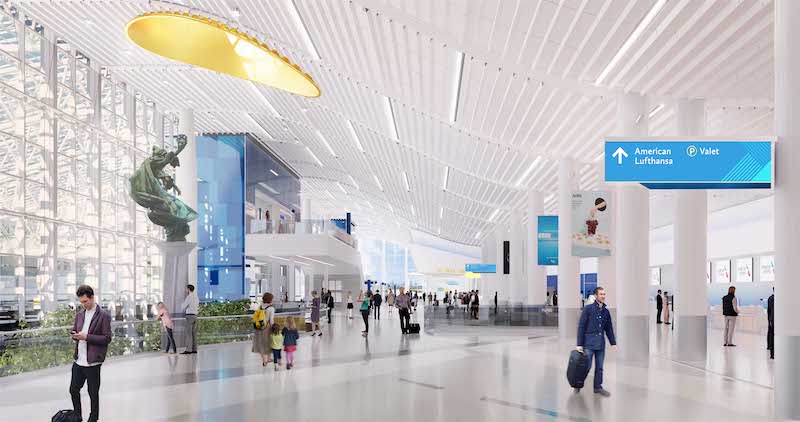
Gresham Smith’s design for the terminal lobby expansion at Charlotte Douglas International Airport in North Carolina will create additional space and de-density the building’s capacity for travelers. Bigger checkpoints and queuing areas will reduce passenger clusters and limit to for possible exposure. Rendering: Gresham Smith
Reed isn’t the only AEC source who sees biometrics in more airports’ futures. Dorsey of Manhattan Construction can envision government-mandated temperature screening systems and isolation rooms implemented at airports’ entry points. (He fears, however, that without a national agenda, airport compliance would be “disparate.”)
Rayfield sees biometrics playing “a big role” in reducing touchpoints and creating a faster and arguably safer journey through the airport. Hall is convinced that passenger safety will be accomplished through improvements in self-checked bags, self-screening security, and touchless restrooms.
AEC sources agree that bringing passengers back to airports begins with creating a touchless environment in which healthcare-level cleanliness is emphasized. PCL Construction, for example, has developed its PURE Portal for baggage and cart sanitization and PURE Aviation to clean airplane interiors. Bob Hopfenberg, PCL’s Vice President-National Business Development in Denver, says the latter tool uses Sterilray technology and resembles a beverage cart with arms that emit FAR UV lights across an entire cabin.
“Everything is on the table, from curb to gate,” says Reed of Burns & McDonnell, “including baggage processing, security checkpoints, ticketing halls, passenger hold rooms, lounges and concessions. The pandemic has amplified the conversation for what future designs should look like.”
An inkling of that future might soon be found at Guadalajara Airport in Mexico, where CallisonRTKL’s design for a 30-gate, 1.2 million-sf Terminal 2 will reduce the airport’s energy use by 60% and its carbon footprint by 90%. The facility’s biophilic design includes landscaping that continues from the exterior to the interior of the space.
“The major trend is infusing health and wellness into terminal design and its DNA so that it is natural and seamless,” says Kap Malik, FAIA, IDSA, who leads CallisonRTKL’s aviation practice in Los Angeles. “ ‘Passenger wellbeing’ has become a key driver of overall passenger experience.” He adds that one of the biggest changes is touchless processing “from curb to gate.”
More diverse jobsites
As they attempt to recapture business by improving their physical plants, airports continue to evaluate alternative delivery methods like Design-Build and Construction Management at Risk (CMAR), says Hall of Austin Commercial. Skanska’s Farland observes that climate change mitigation is also getting attention, as is investment in air cargo facilities to accommodate ecommerce that has soared during the pandemic.
ALSO SEE: Curtis Fentress, FAIA, RIBA, on the STATE OF AIRPORT TERMINAL DESIGN AMID COVID-19

In this segment for BD+C's The Weekly, Curtis Fentress, FAIA, RIBA, Principal in Charge of Design with Fentress Architects, talks about the current and future state of air travel and airport terminal design amid COVID-19. Will we see a bounce back in airport construction? How will terminals be designed and operated differently post-COVID-19? What are some of the top design innovations to combat pandemic concerns and enhance infection control? Fentress and BD+C's David Barista discuss these topics and more. Watch on demand
In July, the Building Team that includes Hensel Phelps and Fentress Architects completed the $292 million, 302,400-sf Concourse D and Terminal Wings expansion at Nashville International Airport. This was that airport’s first progressive Design-Build project in its BNA Vision program, and it went from start of design to delivery in just 900 days, according to Scott Shelby, Hensel Phelps’ Operations Manager.
On this project, Hensel Phelps worked with 70 Small, Women, and Minority Owned Business partners with contracts totaling $55 million. As racial and gender economic and social equality have redefined the nation’s discourse, the composition of companies involved in construction projects is evolving toward greater diversity. Skanska-Walsh’s inclusion of MWBE businesses on the $8 billion LaGuardia Airport redevelopment is the largest partnering with MWBE firms to date on a single contract in New York State history.
Related Stories
Airports | Nov 1, 2016
FAA forecasts a modest dip in spending for airports over next five years
Latest report based on surveys of 3,340 existing and proposed public-use airports.
Airports | Aug 31, 2016
Aircraft manufacturing facility innovation from The Austin Company
Austin’s many innovations contributed to the success of our clients by enabling them to operate in more efficient environments, optimize the flexibility of their operations, and meet aggressive schedules.
| Jul 29, 2016
AIRPORT FACILITIES GIANTS: Airports binge on construction during busy year for travel
Terminal construction will grow by nearly $1 billion this year, and it will keep increasing. Airports are expanding and modernizing their facilities to keep passengers moving.
Airports | Jun 1, 2016
LaGuardia Airport’s massive redevelopment begins construction
The development consortium has secured financing for the $4 billion project, and signed an operating lease through 2050.
Airports | Apr 6, 2016
HOK leads joint venture to expand and modernize Hartsfield-Jackson Atlanta International Airport’s domestic passenger terminal
The domestic passenger terminal is just the tip of the spear, as the world’s most traveled airport is about to undergo 20 years and $6 billion worth of changes.
Giants 400 | Jan 29, 2016
AIRPORT TERMINAL GIANTS: KPF, Jacobs, Hensel Phelps among top airport sector AEC firms
BD+C's rankings of the nation's largest airport sector design and construction firms, as reported in the 2015 Giants 300 Report
Metals | Jan 19, 2016
6 ways to use metal screens and mesh for best effect
From airy façades to wire mesh ceilings to screening walls, these projects show off the design possibilities with metal.
| Jan 14, 2016
How to succeed with EIFS: exterior insulation and finish systems
This AIA CES Discovery course discusses the six elements of an EIFS wall assembly; common EIFS failures and how to prevent them; and EIFS and sustainability.
Airports | Dec 13, 2015
Skybridge connects a terminal and airport on each side of the U.S.-Mexico border
Cross Border Xpress is the first phase of a larger development that will include hotels and offices.
Airports | Dec 4, 2015
National Fire Protection Association drops ban on glass boarding bridges
U.S. airports can now use more aesthetically pleasing building-to-plane links.


